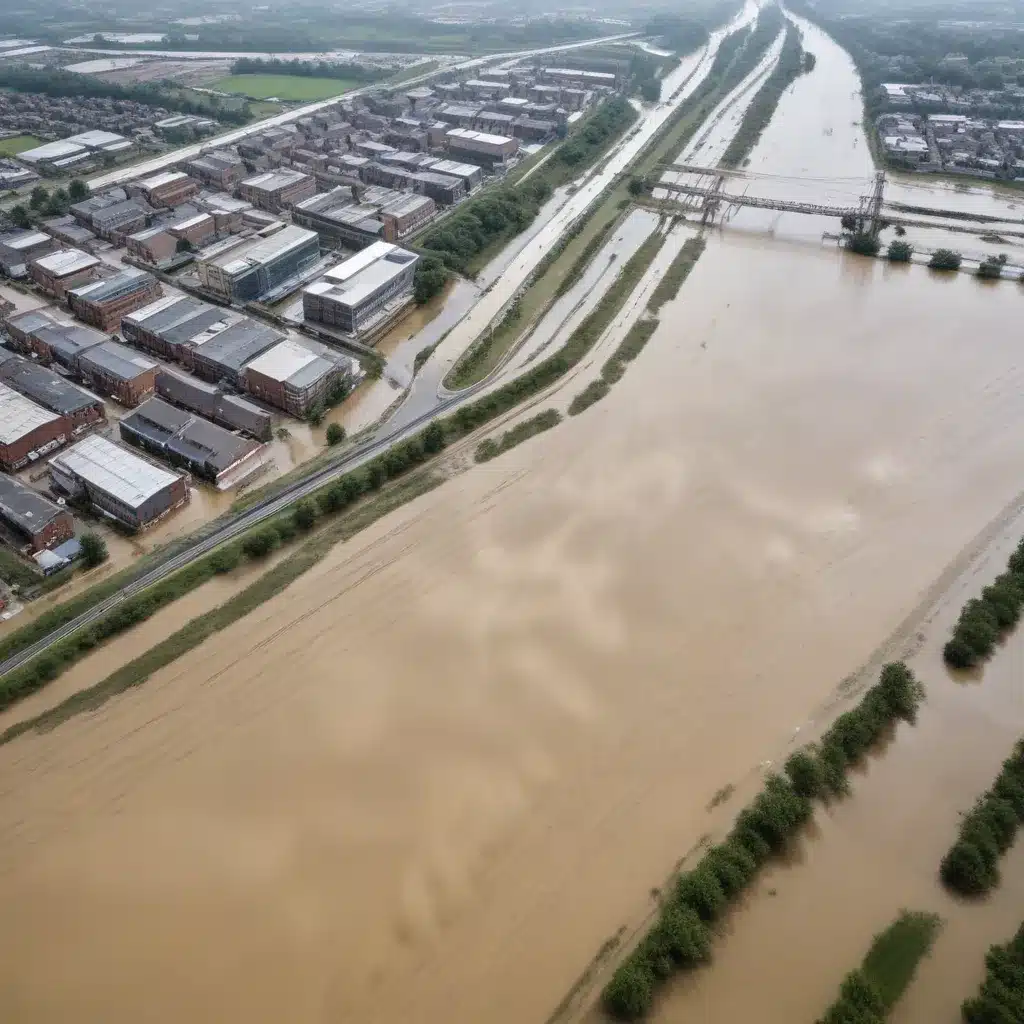
The Unpredictable Nature of Water Damage in Orlando
As an experienced water damage restoration specialist in Orlando, I’ve seen firsthand the devastating impact that water-related disasters can have on homes and businesses. From sudden floods caused by severe storms to slow leaks that gradually cause mold growth, the challenges faced by property owners in our city are truly varied and complex.
One of the most crucial things I’ve learned over the years is the importance of proactive prevention. While we can’t control the weather or completely eliminate the risk of water damage, there are steps that homeowners and business owners can take to minimize the potential for disaster. Regular maintenance, strategic upgrades, and being vigilant about early warning signs can go a long way in safeguarding critical infrastructure and essential services.
Assessing Flood Risk: A Comprehensive Approach
When it comes to understanding the flood risk in our area, I always encourage clients to take a multi-faceted approach. By considering the various factors that contribute to the likelihood and severity of water-related incidents, we can develop a more robust strategy for protection and resilience.
One of the key resources I often refer to is the FEMA website, which outlines the core capabilities needed for effective disaster preparedness and response. These include risk assessment, infrastructure protection, and critical service restoration – all of which are essential in the context of water damage prevention and mitigation.
Similarly, the CISA publication on the National Infrastructure Protection Plan provides valuable insights into the importance of safeguarding essential services and identifying potential vulnerabilities. By understanding the interdependencies between different systems and sectors, we can better anticipate and address the cascading effects of water-related disruptions.
Proactive Strategies for Flood Mitigation
One of the most effective ways to reduce the impact of water damage is to implement proactive mitigation strategies. This can involve a range of measures, from physical reinforcements to operational procedures and emergency response planning.
For example, FEMA’s guidance on key planning factors for chemical incidents emphasizes the importance of identifying critical infrastructure and prioritizing its protection. This principle can be directly applied to water damage scenarios, where safeguarding essential utilities, communication systems, and transportation networks is crucial for maintaining community resilience.
Furthermore, the NATO publication on resilience and disaster response highlights the need for coordinated, multi-stakeholder approaches to emergency preparedness. By fostering collaboration between government agencies, private sector entities, and community organizations, we can develop more comprehensive and effective disaster response plans.
The Importance of Rapid Response and Restoration
When water-related disasters do occur, the speed and effectiveness of the response can make all the difference. As a restoration specialist, I’ve seen firsthand the critical importance of being able to act quickly to mitigate further damage and initiate the recovery process.
One of the key focus areas in this regard is ensuring the availability of essential services and critical infrastructure. By prioritizing the restoration of utilities, transportation networks, and communication systems, we can help minimize the disruption to the broader community and support the continuity of vital operations.
In the aftermath of a water-related incident, it’s also crucial to address any health and safety concerns, such as the potential for mold growth or contaminated water sources. Proper remediation and decontamination measures are essential for safeguarding the well-being of residents and workers.
The Complexities of Water Damage Insurance Claims
Navigating the world of water damage insurance claims can be a daunting task for many property owners. With a multitude of policies, exclusions, and complex regulations, it’s essential to have a thorough understanding of the process and the resources available.
As an expert in the field, I always recommend that my clients work closely with their insurance providers to ensure that they receive the coverage and support they’re entitled to. This often involves careful documentation, timely communication, and a deep understanding of the specific policy terms and conditions.
In some cases, the insurance claims process can be complicated by disputes or disagreements over the extent of the damage or the appropriate remediation methods. In these situations, it’s crucial to have a knowledgeable and experienced restoration professional on your side, advocating for your best interests and helping to facilitate a favorable resolution.
Embracing Community Resilience
Ultimately, the fight against water-related disasters in Orlando is not just about individual properties or businesses – it’s about the resilience of our entire community. By working together, sharing knowledge, and supporting one another, we can build a stronger, more prepared city that is better equipped to withstand and recover from the challenges we face.
As a water damage restoration specialist, I’m proud to be a part of this collaborative effort. Whether it’s partnering with local emergency responders, educating homeowners on prevention strategies, or advocating for policy changes that prioritize infrastructure protection, I’m committed to doing my part in safeguarding our community.
At Orlando Water Damage Restoration, we understand that water-related disasters can be overwhelming and stressful. That’s why we strive to provide our clients with the support, expertise, and resources they need to navigate these challenges effectively. From emergency response to long-term restoration and remediation, we’re here to help our community build a more resilient and secure future.

